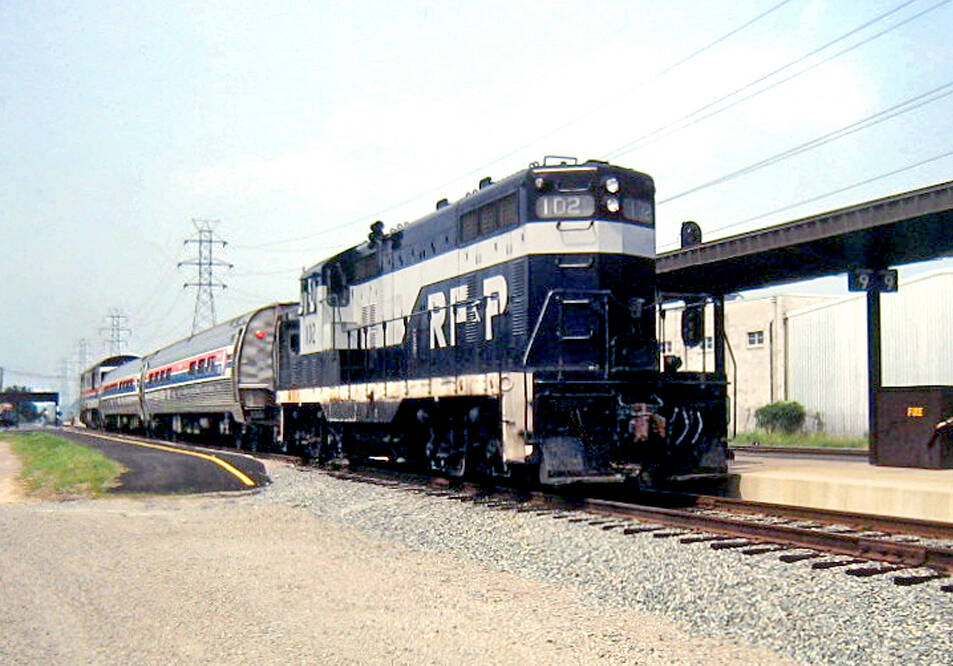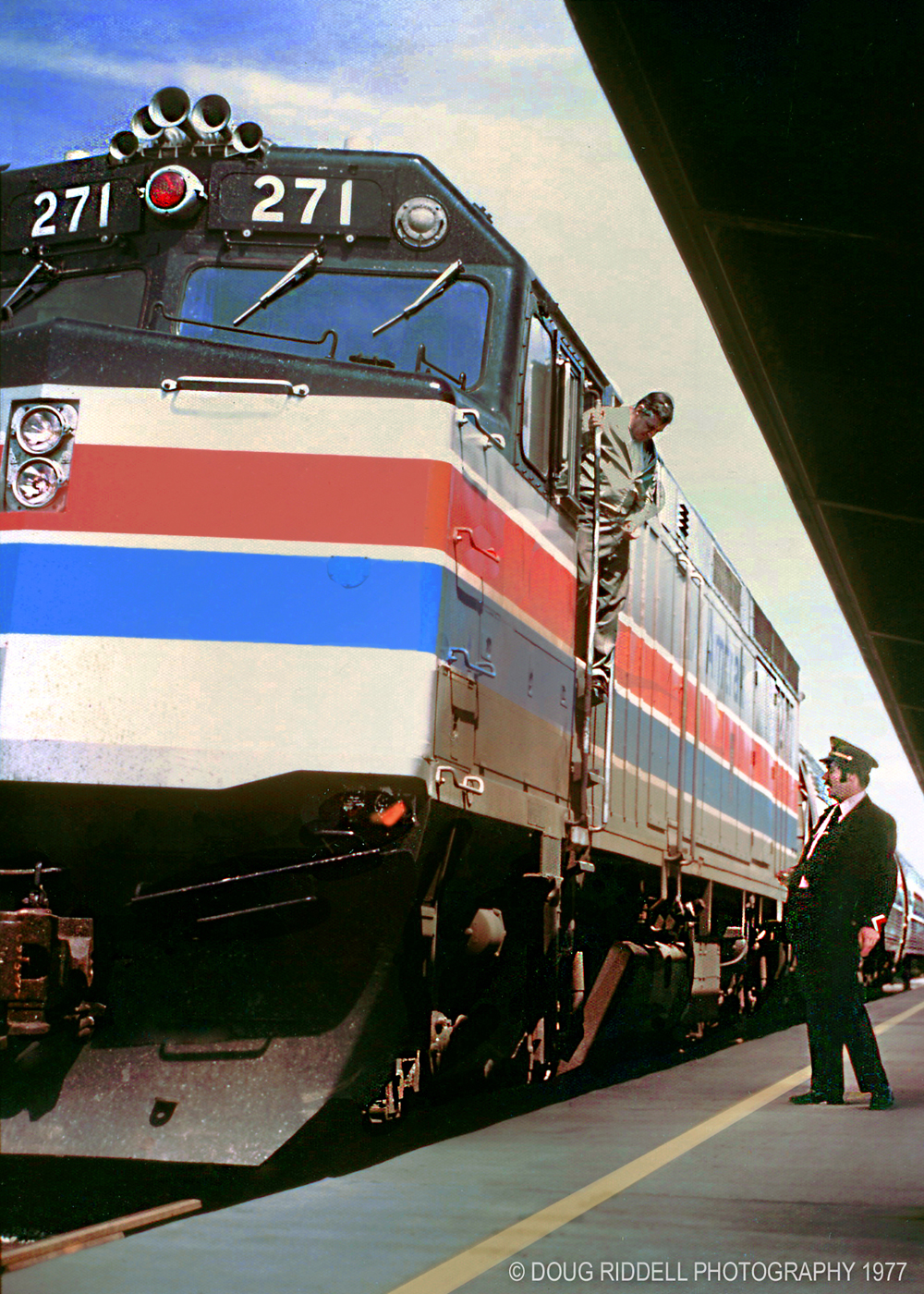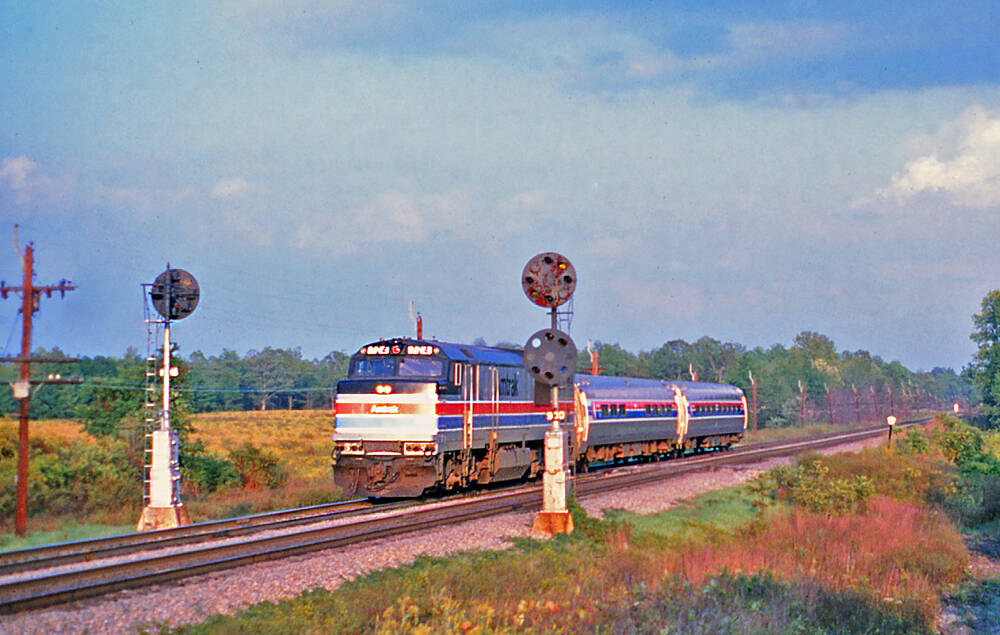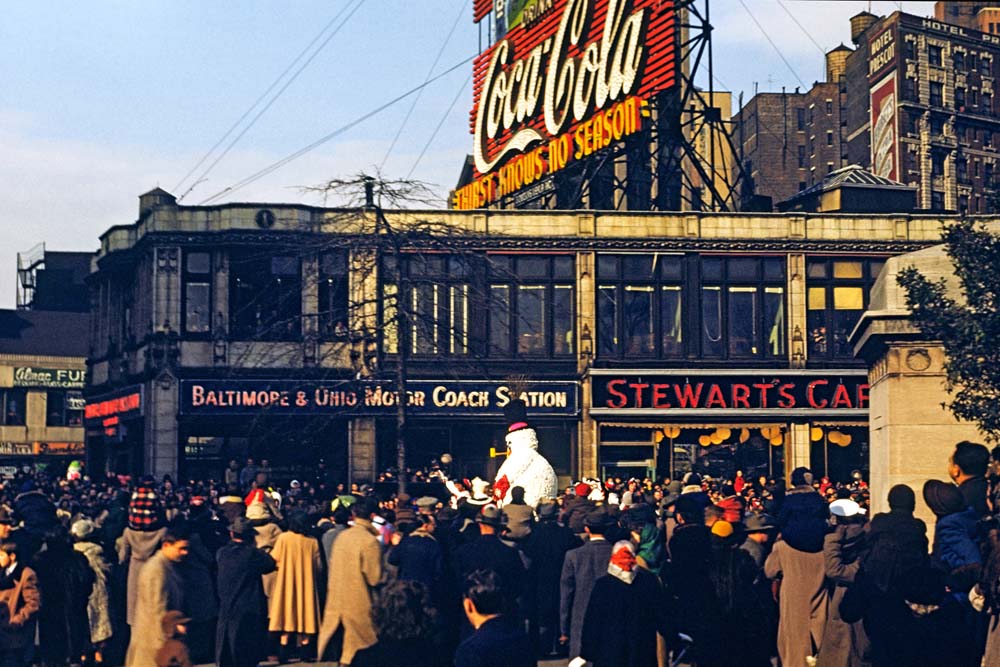Amtrak’s Hilltopper

What had a locomotive on each end, two coaches in the middle, a crew of six, few passengers, and ran backwards for 30 of its 1,674-mile route between Boston, Mass., and Catlettesburg, Ky.?
Amtrak’s Hilltopper — my first regular assignment as a passenger trainman, employed by the Seaboard Coast Line Railroad, which operated it between Richmond and Petersburg, Va.

Influential U.S. Senator Robert Byrd and Representative Harley Staggers, both from West Virginia, kept Amtrak’s feet to the fire, insuring that their constituents got as much bang for the buck as any other American taxpayer. When the poorly patronized Norfolk-Chicago Mountaineer was canceled in 1977, rather than risk their wrath, Amtrak replaced it with an Amfleet consist that turned north from Norfolk & Western’s rails at Petersburg, Va., heading for the cities of the Northeast Corridor. Amtrak’s sole presence in Norfolk sadly became a connecting bus to the Hilltopper at Petersburg, or the Colonial at Newport News.
As an SCL employee, I was part of the crew that operated the train round trip between Richmond and Petersburg. Initially, since there was no connection at Petersburg to allow direct movement west on the N&W, the train, (which always consisted of an engine, usually a GE P30CH, a coach, and a dinette) was wyed and dragged backwards in both directions between Richmond and Collier Yard, south of Petersburg, using venerable Richmond, Fredericksburg & Potomac Railroad GP7 No. 102.
The initial schedule necessitated that our crew went on and off duty at Collier with a 2-hour turn between trains at Richmond. Unassigned employees filling vacancies were called from the Richmond extra board and drove to Collier Yard — they were compensated for their time and auto mileage. Regularly assigned engineers and trainmen however, who worked the train by choice, had to get to Petersburg on their own time and expense.
The job worked 7 days a week, but paid the very minimum, so new hires with little to no seniority — such as I — were able to hold it.
Amtrak later received $2 million in federal funding for a westward connection at Petersburg that required no turning or switching. Additionally, the Hilltopper took the Night Owl’s slot north of Washington, so the assignment signed up at Richmond, working to Petersburg and back, with a 4-hour layover. Rather than sit at the shelterless asphalt platform on Fleet Street, I rode the train to Farmville, Va. — home of [then] all-female Longwood College. There, I ate, and made the return trip — often finding a date for the weekend.
Unfortunately, Byrd and Staggers couldn’t save the Hilltopper from the congressionally mandated 1979 budget axe. SCL and N&W quickly abandoned vital segments of the Hilltopper’s trackage, dashing any hope of its revival.

Anticipating being furloughed, I opted to become an engineer trainee. I reconnected with, and soon married, a beautiful girl from high school. Fast forward 45 years, and our son now runs Amtrak trains to Norfolk, Roanoke, and other east coast destinations.
Virginia is partnering with Amtrak in a record breaking passenger rail renaissance. Life is good though. Indeed, it is.
Check out previous column, “From the Cab: A picture worth a thousand words” from retired Amtrak Engineer Doug Riddell.














What if you started up a passenger rail service and no one bought tickets?
Great article
RF&P 102 displays the lettering CSX should’ve used for the heritage unit…
Agreed. You can hardly make out what it says on the side of the RF&P CSX Heritage Unit. First off, its right behind the handrails which block a clear view. Second of all, its all masked together in a script format that is basically hard to read. The R F & P design in the above listed GP 102 would stand out which the other one doesn’t. Its the same problem with the small Monon heritage unit and the Chesapeake and Ohio unit where the script is behind and below the handrails. They should have lifted it up just above the hand rails. It was easily seen on the “covered wagon” F and E units, not so much on modern hood units. One more thing, the Chessie System needed to be the same size as it was on the Geeps and U Boats back in the day.
While UP’s heritage units are okay because they honor the railroads not the lettering or paint scheme, CSX would have been better off doing it like NS did it, actual freight schemes which they did on some like the Conrail “Quality” unit… But all in all its a nice attempt at remembering the past…
What a handsome little train; brings GM&O “Little Rebel” to mind.